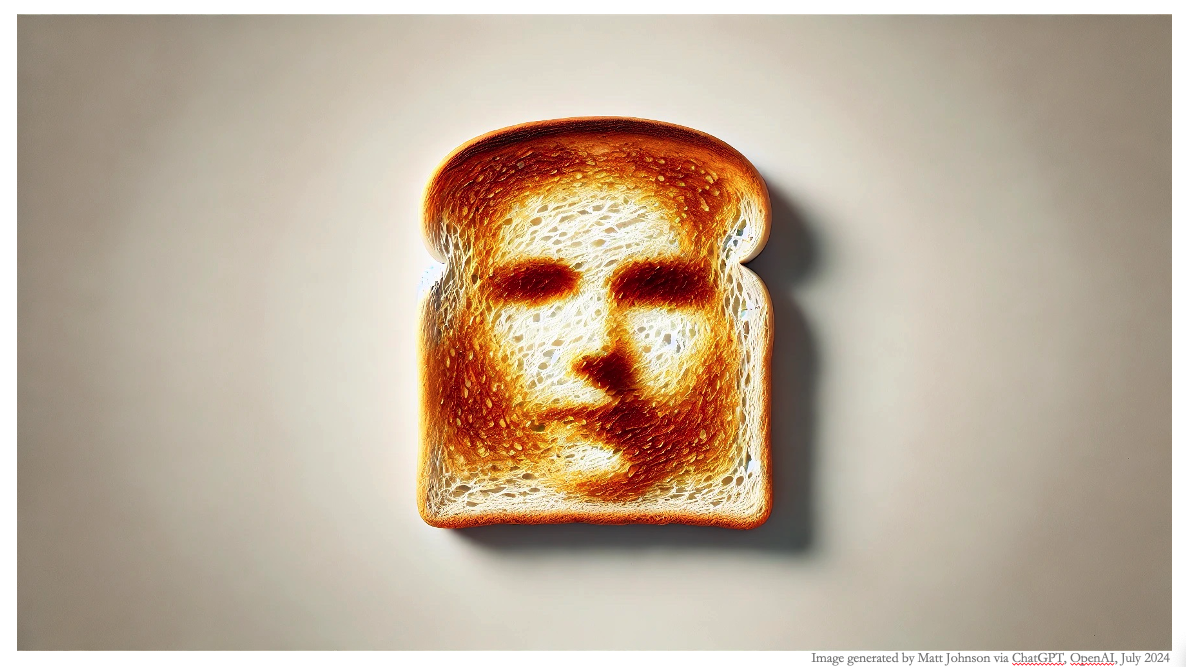Serendipity, Neuroscience, and Marketing: Leveraging Surprise in a Personalized World
The following is the transcript from my TEDx talk filmed in July 2024, titled How to create your own serendipity with marketing psychology.
Technology has a way of converging with our deepest desires. Each new advancement gets better at delivering exactly what we want, when we want, and how we want it. If we take these trends to their fullest expression, we may soon have a technology which can produce any possible experience.
On the one hand, this feels very new, this feels futuristic. On the other hand, it's very similar to an idea that was being discussed way back in the 1960s, by the Philosopher Alan Watts. He discussed this in one of his public lectures in Sausalito, California. And he said that ultimately, as technology advanced, we would create a vast control panel, where all possible pleasures are just a button press away.
You’d press a button here – and you're tasting the most delicious chocolatey sensation. You’d press another button - and you’re enjoying the most beautiful symphonic music. You’d press another button - and you’re whisked away into the most enthralling cinematic experience that was created just for you.
Watts said that you’d play with this apparatus for quite some time. And then at some point, you’d look down and see a button you hadn’t noticed before. It’s labeled surprise. You press that button, and here we are, in the present moment, listening to a public lecture.
In classic Alan Watts form, it’s a bit cryptic and open to interpretation, but for me, it means this: Even When we Can Have Anything, There’s a Special Place for the Unexpected. I think this says something very important about our relationship to technology. That regardless of what we would choose to deliver for ourselves, that there’s magic in serendipity: this incredible, rarified human experience where it feels as though the stars have aligned; against the odds, and with no explanation, the best thing that could have happened, has happened.
This may all sound a bit abstract, and maybe even a bit new age. But serendipity isn’t an otherworldly experience, it’s a very real, and very human experience.
And so what I would want to do here is ground this in science - specifically, in neuroscience. I’ll argue that serendipity, like all mental experience, has fundamental building blocks, and once we understand them - we can utilize them to create serendipity, both for ourselves, and for others.
The Connection Between Serendipity, Neuroscience, and Meaning
So what are these building blocks - these key features? When we think of serendipity, we typically think of an event which is two things: It’s enjoyable, and it happened by surprise.
These are important, and they’re great start. But if we think about it, there are lots of scenarios that are enjoyable and surprising, but that don’t produce serendipity. Maybe you get a unexpected gift from your significant other. Or your favorite sports team wins it all. These are fantastic, but again, no special feeling of serendipity. For that, we need to add in one final, all-important element. And here’s where taking a neuroscientific approach is helpful. Because this last element involves one of our brain’s fundamental drives: the drive to find patterns and meaningful explanations.
As a neuroscientist who studies experiential marketing, we’ve come to understand that the human brain is not a passive receiver of information. We’re “meaning seeking” creatures; the brain is a "meaning seeking" organ. But here’s the thing: We have SUCH a drive to see meaning, that we find it - or think we’ve found it - amidst randomness and incoherence. This is why, for example, you’ll look up to the clouds and you’ll see what looks like a face. This is why, every year 1000s of people claim with certainty that Elvis Prestley showed up in their toast.
And here’s where it comes back to serendipity. Because this tendency to over-extend - to find meaning amidst incoherence is especially true for our lives - for how we understand events and encounters. When the brain is unable to find a satisfactory explanation for why something has occurred, something very curious happens: The brain creates its own sense of meaning. Just like seeing the face in the clouds, we’re the ones that supply the meaning. And when this meaning-making process unfolds within an experience which is also enjoyable, and surprising, we get: serendipity.
How Serendipity Creates Meaning from Chance Encounters
Let’s make this concrete with a specific example. Imagine you’re walking along in Philadelphia, and, after not seeing this person for 10 years, you cross paths with your middle school crush. That’s enjoyable, and that’s surprising.
But now layer onto that, the fact that neither of you are from Philadelphia. Neither of you have spent much time in America. The last time you saw one another was in your mutual hometown of Calcutta, India, halfway across the world. And you both just happened to be in Philadelphia, at that same time, walking along that same street.
This is so mind-bendingly low probability, it’s inexplicable; the brain essentially says, “it can’t just be coincidence. There must be meaning here. It must have happened for a special reason.” And this, of course, is the very essence of serendipity: this special feeling of meaningful coincidence.
Now that we have this context, we can come back to our fundamental building blocks. In putting it altogether, serendipity arises from experiences which are three things:
Enjoyable
Surprising
Lastly, inexplicable – there’s no clear explanation as to why we’re having this experience. There needs to be space left open, in order for our own sense of meaning to fill into
The Impact of Serendipity in Marketing
Serendipity is a wonderful emotion. And a powerful emotion. When it happens, it can generate a deep bond with the circumstances that produced this feeling.
It can, for example, lead us to take that romantic leap of faith. The story I described earlier, of crossing paths in Philadelphia, is a true story of how Moumita and Shayak were reunited. They felt such a connection with this serendipitous encounter that they got married shortly after.
Serendipity though, is not just limited to romantic encounters. It can infuse everyday experiences with greater meaning. With these building blocks in mind, we can think about designing for serendipity. Consider the following piece of research, from The Journal of Marketing. First off, participants were given a piece of chocolate. So far so good - enjoyable.
They either gave it to them in a candy shop, where we’d probably expect it. Or in the lobby of a bank, where we probably would NOT expect it. And the last condition was explicability. They either gave it to them with an explanation as to why they were handing them out, or they gave them no explanation. They just gave them the chocolate and walked away.
And across all of these conditions, the combination that produced the best results was 1) the chocolate, in the lobby of the bank, with no explanation. So enjoyable, surprising, inexplicable. And by best results I don’t just mean most enjoyable, but it was in this condition that the participants had a strong feeling of serendipity, and a deeper sense of meaning and attachment to the product.
And so for the experience designer - whether in marketing, events, or retail, the message is clear: if you’re in a position to design experiences, utilize these building blocks, and design for serendipity.
Using Neuroscience for Planned Serendipity
But what about for the rest of us. You may be wondering - do I have to wait around for someone to create serendipity for me? And the answer is no, we can cultivate it for ourselves. We can engage in what we might call “Planned Serendipity”. It sounds like a paradox - how can we plan for something to happen by accident?
This approach recognizes the importance of our own attentional state to feelings of serendipity. Recall the last time you focused very intently on filling out an important document, or zeroed in on finding a specific product in a crowded store. Here, you were employing your endogenous attention: here attention is determined internally, aimed at our own goals.
This is great of course, but when we engage in this, we do so at the expense of everything else around us. We shut down this second form of attention, which is crucial for serendipity. This is exogenous attention: Here our attention is open, driven by the immediate environment.
Planned serendipity is about turning up our openness to a current experience, by turning down our own deliberate goals. It’s about carving out a time for yourself where you don’t have a specific goal, just a general orientation. Instead of going somewhere specific for a specific purpose, simply go, let’s say, “north”
And along the way, allowing your experience be driven exogenously - by a curiosity of what you may happen to find. In planning for serendipity, there are of course, are no guarantees. But it's in this attentional state you’re most likely to find experiences which are enjoyable, surprising, and inexplicable. It’s when you’re not looking for anything at all, that you’re most likely to find serendipity.
Final Thoughts on Serendipity
Technology is incredible, and will no doubt provide us with an unimaginable range of personalized pleasures. But it’s up to us – both as experience designers, and experience seekers, to cultivate experiences which are not merely enjoyable, but are rich in meaning. And so, as our innovations gets better and better at delivering us exactly what we think we want, let’s not forget that surprise button.
Thank You
Photo by Caju Gomes via UnSplash



